Huernia zebrina ssp. insigniflora
Scientific name: Huernia zebrina ssp. insigniflora
Common names: Lifesaver Plant, Zebra Striped Huernia, Starfish Flowers, Carrion Flowers
Natural habitat: Huernia zebrina ssp. insigniflora originates from the semi-arid regions of Eastern and Southern Africa. In these habitats, it is well-adapted to survive in sparse soils with infrequent moisture, utilizing its succulent stems to store water.
Flowers: Huernia zebrina ssp. insigniflora exhibits flowers that are a true natural masterpiece, typically around 1 inch (2.5 centimeters) in diameter. The blooms feature a spectacular combination of creamy yellow and soft pink patterns, centered around a rich, deep red eye.
Stems: The plant boasts cylindrical, succulent stems that are a vibrant green, providing a perfect backdrop for the colorful blooms. These stems grow upright and reach a height of 3 to 4 inches (7.6 to 10.2 centimeters), complete with small, spaced-out spikes that enhance the plant’s textured appearance.
$3.50
Huernia zebrina ssp. insigniflora is an enthralling succulent that brings a unique charm to any plant collection. With its star-shaped flowers that display a delicate blend of creamy yellow and soft pink with a striking deep red center, this plant creates a captivating visual interest. Moreover, the lush green stems, growing up to 3 to 4 inches (7.6 to 10.2 centimeters) in height, are adorned with gentle spikes, offering an appealing contrast in texture.
We sell all Stapeliads as unrooted cuttings – a bunch of 3 stems each minimum 4 inches (10 cm).
General Care for Stapeliads
Stapeliads are a unique group of succulent plants known for their striking flowers and interesting forms. They belong to the Apocynaceae family and are mostly native to Africa, with some species found in Asia and the Middle East. Here’s a general guide to caring for Stapeliads:
- Lighting: Stapeliads thrive in bright, indirect light. Direct sunlight can be harmful, especially during the hottest parts of the day. A partially shaded spot is ideal.
- Watering: These plants require moderate watering. Allow the soil to completely dry out between waterings. Over-watering can lead to root rot, so it’s essential to ensure good drainage.
- Soil: Use a well-draining cactus or succulent mix. Stapeliads prefer a soil mix that allows for good air circulation around the roots.
- Temperature: Most Stapeliads prefer warm temperatures and are not tolerant of frost. Keep them in temperatures above 6-8°C (43-46°F).
- Humidity: Stapeliads generally do well in average room humidity. However, during the growing season, a slight increase in humidity can promote healthier growth.
- Fertilization: Feed sparingly during the growing season. Use a balanced, water-soluble fertilizer at half strength.
- Propagation: Propagation can be done through stem cuttings or seeds. Allow cuttings to dry before planting.
- Pests and Diseases: Watch out for pests like mealybugs and take precautions against snails and slugs. Stapeliads are generally resistant to diseases if well taken care of.
Specification: Huernia zebrina ssp. insigniflora
| Weight | 0.55 lbs |
|---|



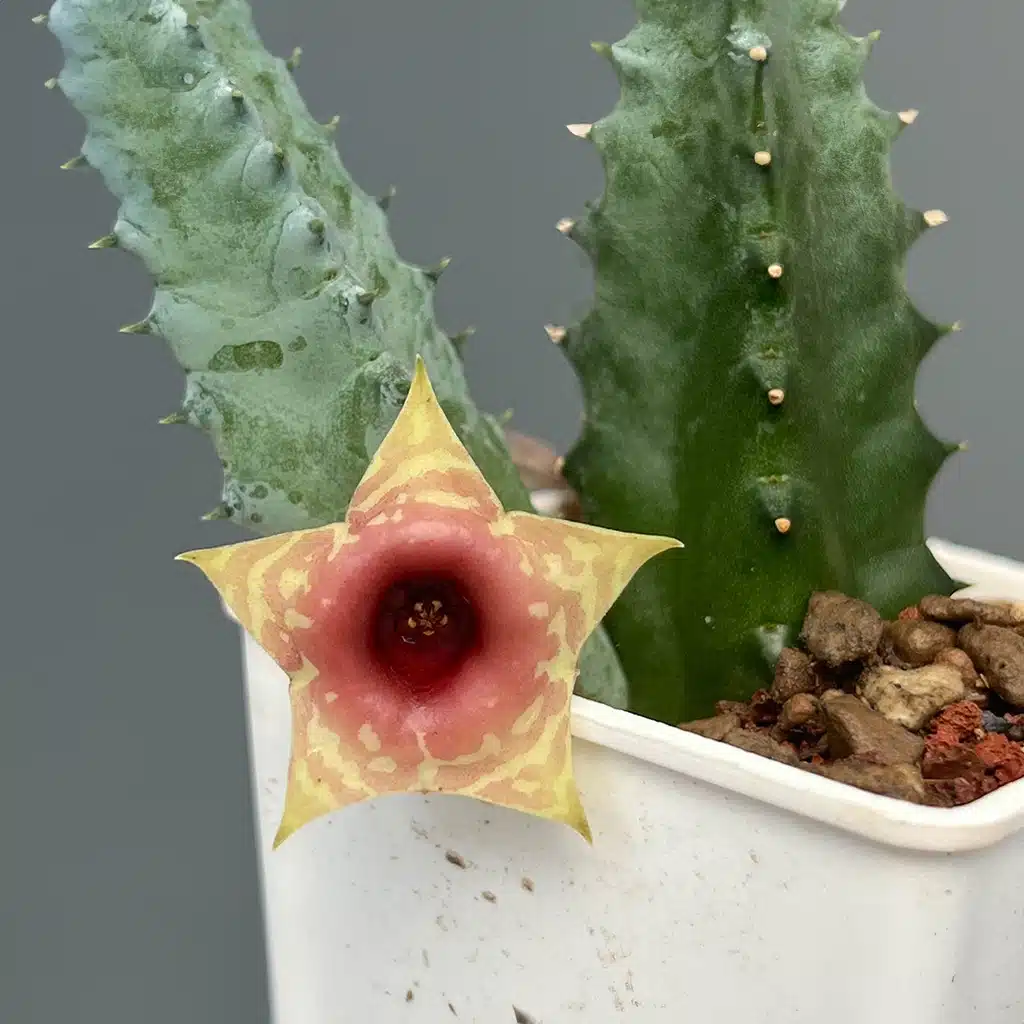
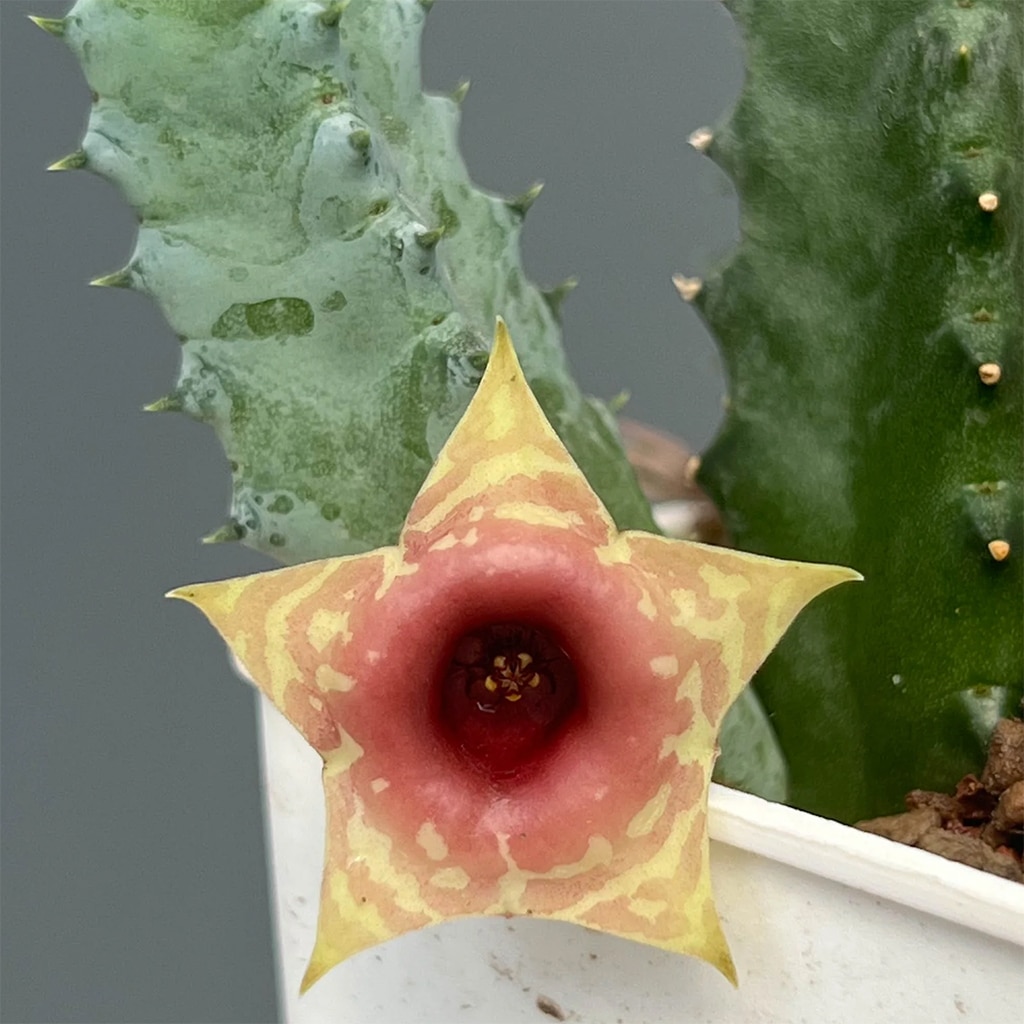
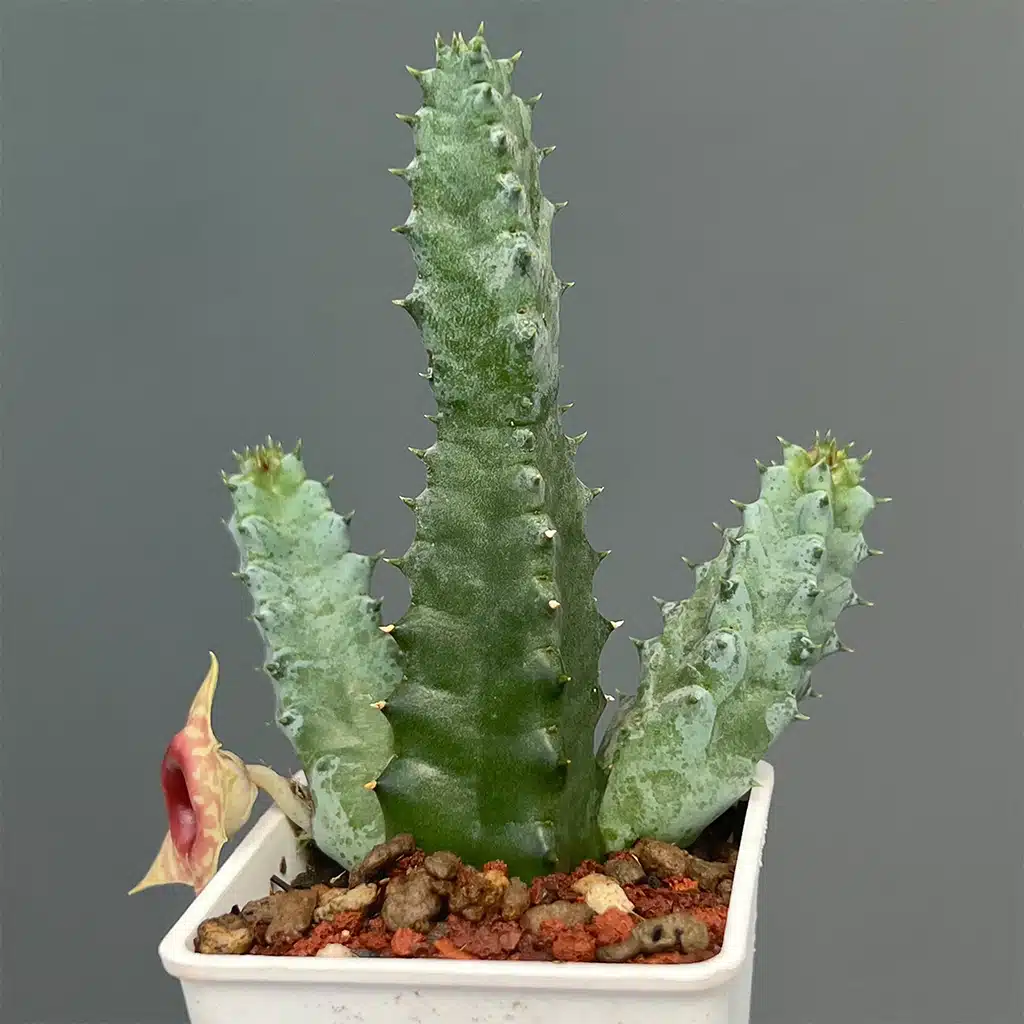


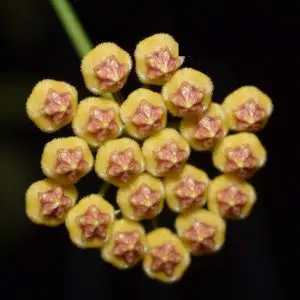
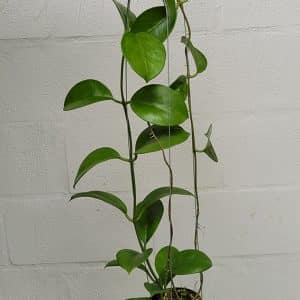
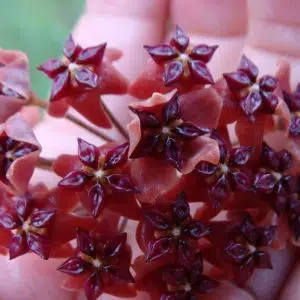
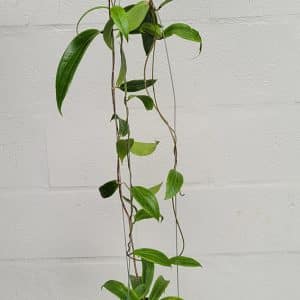
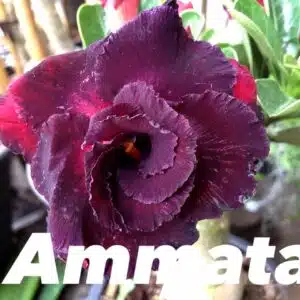
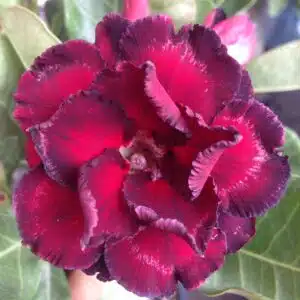

There are no reviews yet.